Its been a while since I had an update to my Personal Photography Project.
You can check out this post for a more detailed explanation, but essentially my aim with this is to show you some pictures of invertebrates, and by using the simple black background you can appreciate how beautiful they are.
Previous Themes:
Spiders - Butterflies - 'Green' - 'Moth Trap Finds' - Highlights - Caddisflies - Ladybirds - Hoverflies - Bugs
For this edition we are going to look at some of the different species of Bee which can be seen in this part of the UK. I will start this article though with a small note: The Honey Bee is not featured.
'Why not?' I hear some of you mumble in surpise. The Honey Bee is NOT a wild species, not here in the UK, nor even amongst the majority of places it can be seen. Its colonies live in Bee Hives built and maintained by Humans, hence Honey Bees should be considered in the same aspect as other Farm Animals (Cattle, Sheep, Pigs etc).
They are livestock.
Many areas of the general population put great effort into 'saving Bees' and yet most of them only focus the Honey Bee (Apis melifera). Honey Bees have an army of Beekeepers looking after them, they are certainly not in any danger. Instead, it is all of the wild species (260 in the UK alone) that are struggling instead.
If you want to help 'Bees', don't build a Bee Hive. Plant lots of native wildflowers for food, and leave areas of gardens (or parks etc) overgrown and undisturbed for them to nest in.
I get down off my soapbox now
Lets look at some of the Wild bees I have seen in the garden...
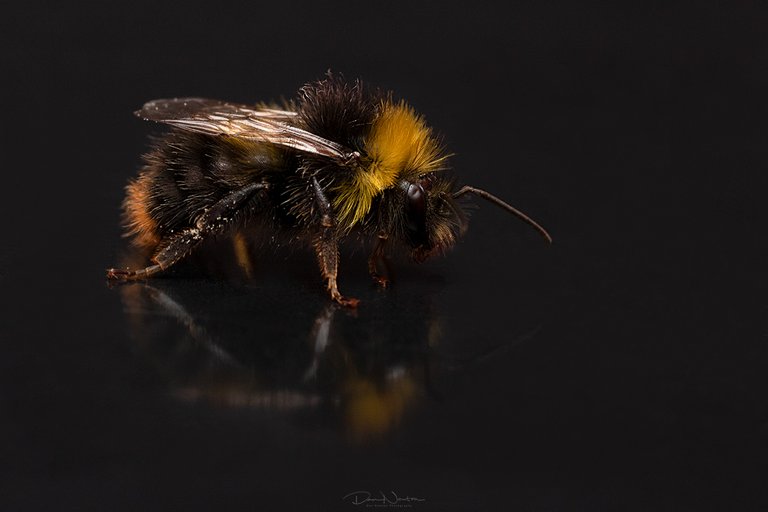
Early Bumble Bee - Bombus pratorum
I mentioned previously that there were over 260 species of Bee in the UK. That number surprises a lot of people, including me. I thought there were Honey Bees and Bumble Bees and that was it. It turns out there is a lot more going on under our very noses.
This is an Early Bumble Bee, and gets its name from being one of the first species to observe in Spring. Bumble Bees are generally larger than the average Bee species and all of which are very hairy (almost cute and fluffy!). Like the Honey Bee it is a Social species which nests in small colonies. In each nest is a single queen, and lots of worker bees collect food for the developing larva.
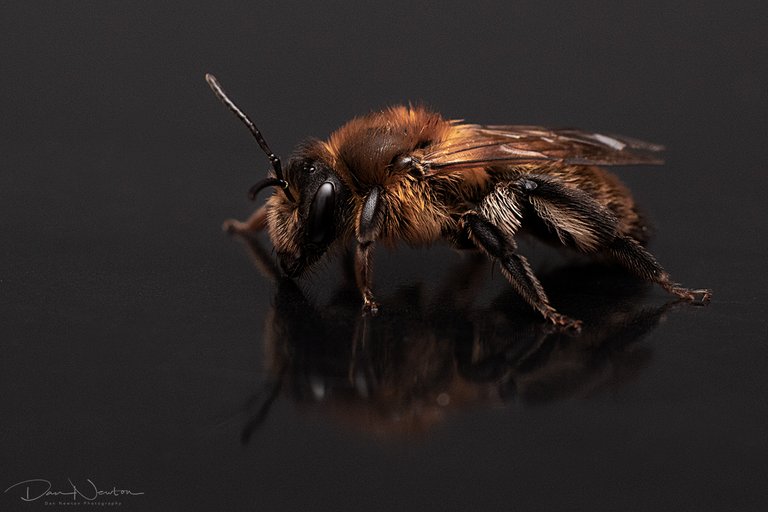
Mining Bee - Andrena scotica
Whereas the Bumble Bees (approx 10 species) are social insects, the rest of the 250 species of Bee are all solitary. This means that each female works on her own to lay eggs and make sure the next generation succeeds.
For Mining Bees (Andrena sp) each female digs a nest burrow in the ground. In it she will lay some eggs in small chambers and in each chamber she will provision it with food (pollen) for the Larvae to eat.
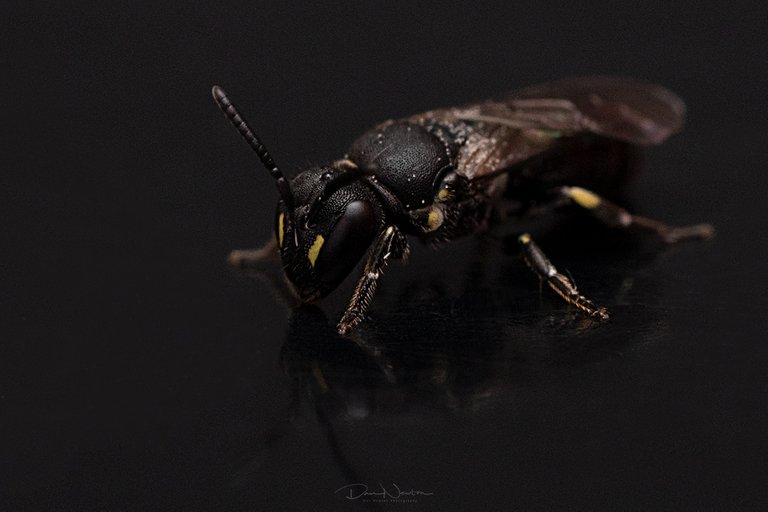
Yellow-faced Bee - Hylaeus communis
There are lots of different Solitary Bees who follow the same idea in slightly different ways. The aforementioned Mining Bees dig holes in the soil. Mason Bees (Osmia sp) nest in small holes in wood, and use wet mud to build each nest chamber. Leafcutter Bees also use small holes in wood, but use small fragments of Leaves to create each nest chamber.
The Yellow-faced Bee (pictured) is another cavity nester, choosing to nest in small gaps in wood. I often see these flying near my wooden Garden Bench, so its a strong possibly they are actually nesting in the Bench itself. The name 'yellow-face' is quite obvious, and all species have different patterns of yellow patches on their faces.
These are quite common but not seen often due to their small size (roughly a third of the size of a Honey Bee, very small indeed.
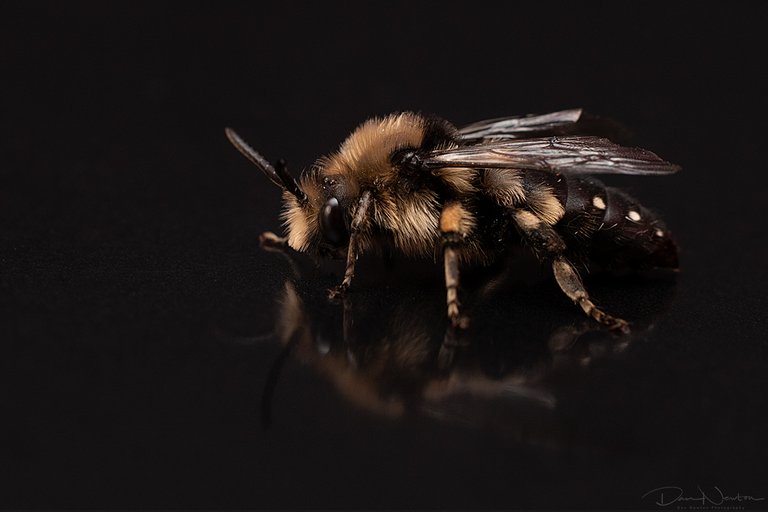
Common Mourning Bee - Melecta albifrons
After the Solitary nesting bees, we move on to kleptoparasite species. There are a number of Bee's who are essentially lazy and can't be bothered to go to the effort of building their own nest. Instead they act like Cuckoo's Cuckoo's (Source) which is a species of bird which lays its eggs in the nests of other Birds.
'Cuckoo' Bees show the same behavior. Once the host bee has built the nest, the parasitic bee will sneak and lay her egg in the pre-built nest chambers instead. Melecta albifrons is the parasite of another common bee: the Hairy-footed Flower Bee (Anthophora plumipes)
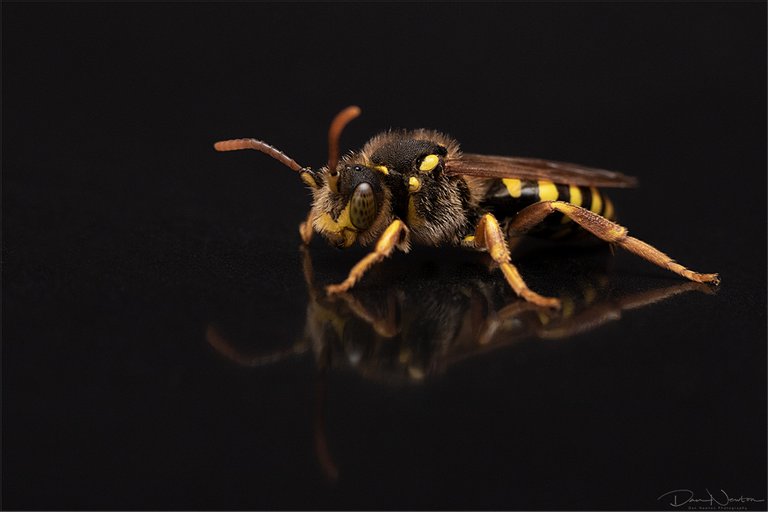
Gooden's Nomad Bee - Nomada goodeniana
Nomad Bees are more examples of Kleptoparsitic Bees. They use the nest burrows of Andrena sp Mining Bees.
Despite their unsavoury behaviour, they are attractive looking insects. You might say they look like Wasps, and I will agree with that. Wasp are very closely related to Bees, and both belong to the same group: Hymenoptera. I can assure you that this is a Bee (its larvae are vegetarian... wasps larvae feed on meat sources)
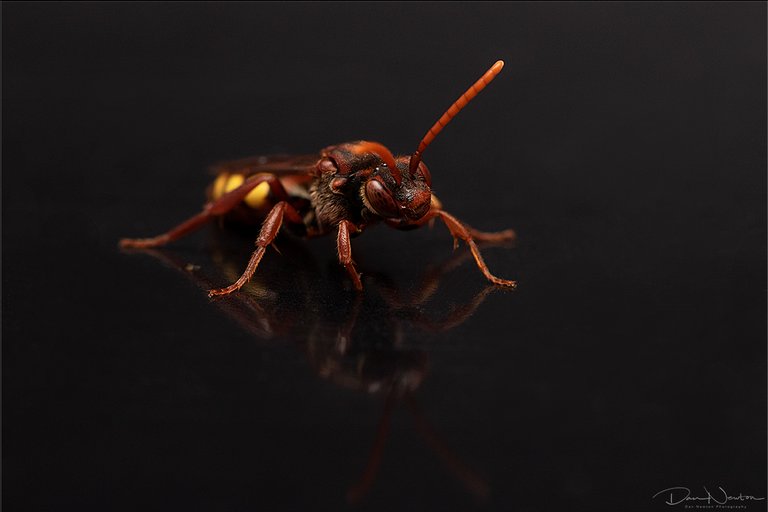
Nomad Bee species - Nomada sp
And I'll end this post with another Nomad Bee species. Its really hard to ID some of these species, and for some of them the only certain way is dissection (killing the insect and looking at it under a microscope). Some of the differences between the species can be unseen by the human eye, for example in this picture if I had a decent close-up shot of the lower mandible (lower part of the mouth) then I might have managed a full ID.
This is very likely to be either Nomada flava or Nomada panzeri but I will never know now as this striking individual was released after this picture was taken.
I'm starting to ramble now. I guess I'm trying to say that there is a time and place for the catching and killing of insects to understand more about them, and in the long term that understand means we can understand the various species better, and ways to help protect and conserve them for future generations to enjoy.
For me I don't need that level of detail for my work, so I am happy to release them afterwards
While in my care, all individuals are looked after, and after Photographs have been taken, they are all released safely outside.
All names of species have been checked via Wikispecies
Infomation on Bees have been cross-referenced via the BWARS website

If you have any thoughts or opinions on this article then I'd love to see your comments.
And if you really like the content then maybe you would like to upvote or re-hive it.

Check out my website for more of my work.

Hi @dannewton,
Thank you for participating in the #teamuk curated tag. We have upvoted your quality content.
For more information visit our discord https://discord.gg/8CVx2Am
Very good and detailed post 😀
Thank you! I'm glad you found it interesting 😁
Thanks for continuing to make Hive awesome.